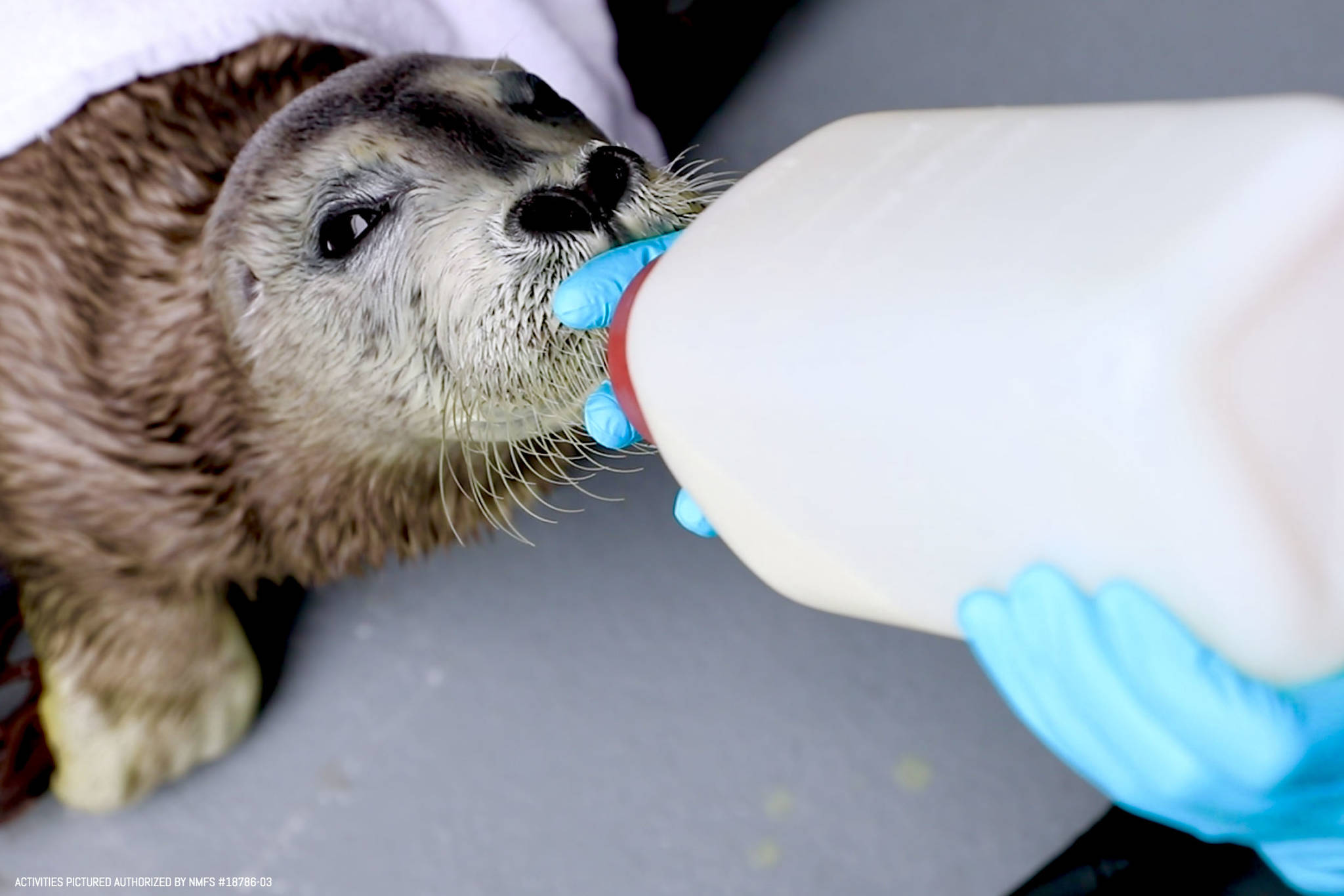The Alaska SeaLife Center (ASLC) welcomed last month a new, fairly unique rescue: a bearded seal pup.
The ASLC admitted the pup into their Wildlife Response Program on April 13 after it was rescued from the shores of Shaktoolik, according to a news release on Thursday. Shaktoolik is a village on Norton Sound in northwest Alaska near Nome.
Local school children had reportedly taken it upon themselves to protect the newborn seal from being harassed by people or pets. Ice seals are hunted for subsistence purposes in the Northern Alaska villages, but because of the kids’ attachment to the pup the village decided to call ASLC for help, according to the release.
Village Police Officer Jeffery Paniptchuk was cleared by the National Oceanic and Atmospheric Administration to secure the pup, and ASLC Communications Coordinator Chloe Rossman said that Paniptchuk had to borrow a kennel from someone in the village in order to get it on the Ravn Air flight back to Anchorage.
Once the pup had arrived at the SeaLife Center, the staff quickly determined that it was severely underweight. Rossman said that the one-week-old pup weighed 22.9 kilograms when it first arrived. Newborn bearded seals typically weigh around 33 kilograms at birth, according to the Encyclopedia of Marine Mammals. Bearded seals normally gain three times their weight within a few weeks of birth due to the high fat content of their mother’s milk.
Wildlife Response Curator Jane Belovarac said in the news release that they have to feed the malnourished seal slowly and not rush anything.
“We have to take her weight gain slow to make sure her body can process the nutrients,” Belovarac said.
Rossman said that this is only the second bearded seal pup that ASLC has ever rescued, so a special formula had to be created by the vet staff, combining walrus, harbor seal and fish gruel formulas. The first bearded seal pup was rescued from Flaxman Island in March of 2002, but Rossman said that one died a few days after arriving at the SeaLife Center.
The new pup also initially had trouble regulating her body temperature while in the water due to her weight, according to the news release.
“When she first started swimming, staff had to assist her out of the water to ensure she didn’t get too cold,” Husbandry Director Lisa Hartman said.
Now that the pup is approaching 30 days of quarantine at the SeaLife Center, Rossman said that the team is “cautiously optimistic” about her recovery. The seal’s current weight stands at 39.2 kilograms, which is almost double what it was when she first came to the center.
Because bearded seals are considered non-releasable by the National Marine Fisheries Service, Rossman said the National Oceanic and Atmospheric Administration and U.S. Fish and Wildlife will determine what to do with the pup once it fully recovers. After the 30-day quarantine period is over, the ASLC will also start thinking of a name for their newest guest.

